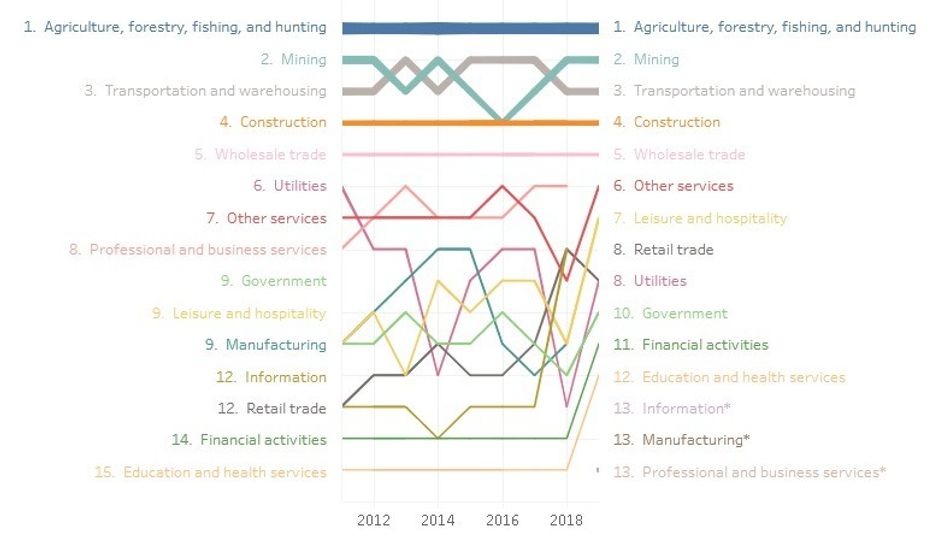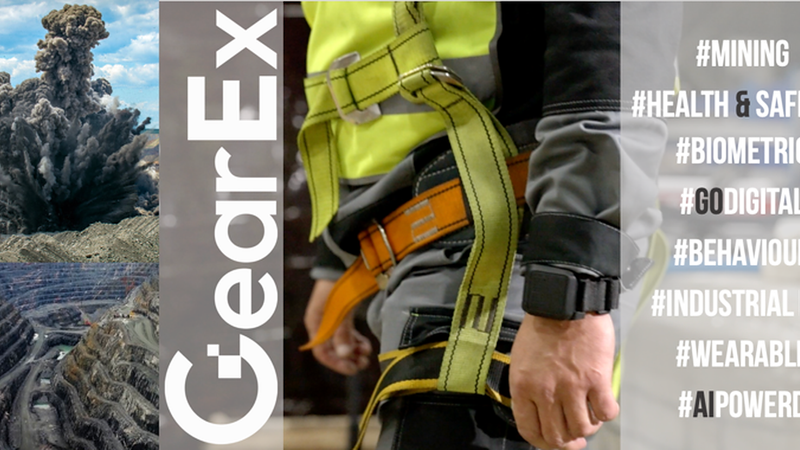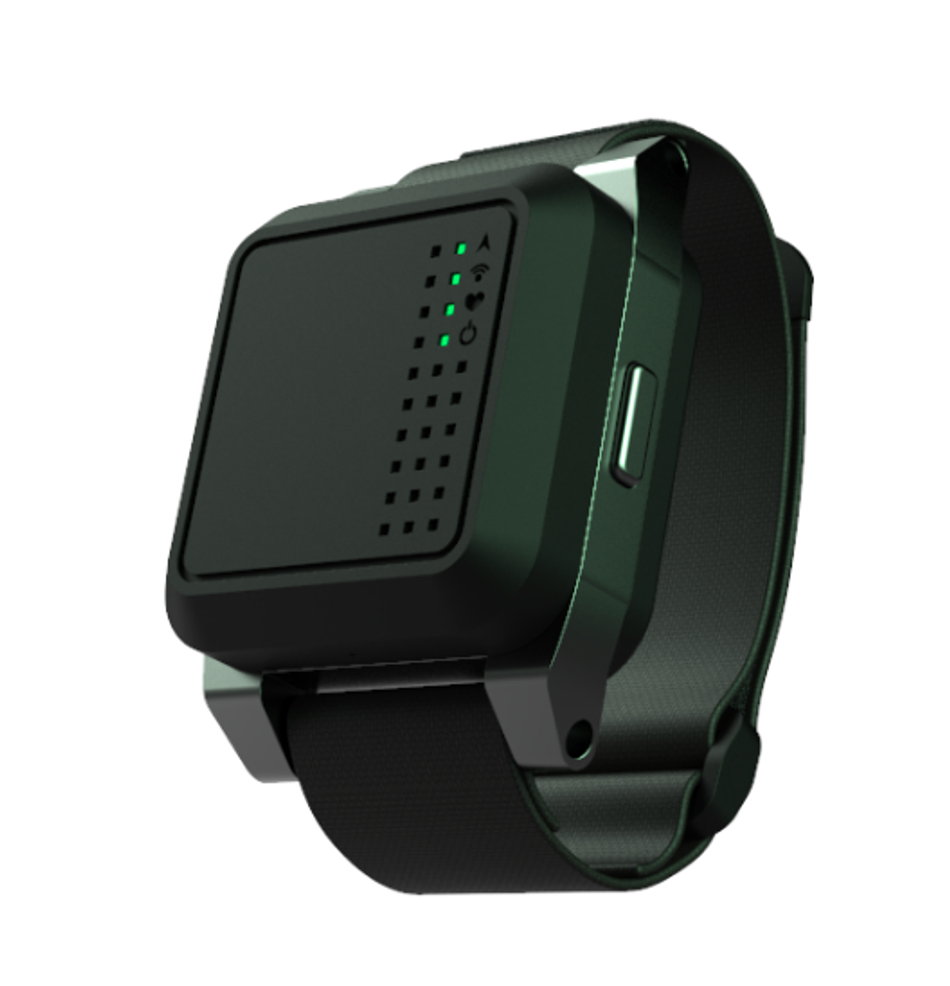Wearable Technology Improves Safety and Significantly Reduces Mining Accidents
Despite an enormous effort and a significant reduction in fatality rates, mining remains one of the most hazardous industries for workers. However, new technologies are starting a safety revolution, while simultaneously fueling the mining industry’s digital transformation.
Mining is still a very hazardous industry
Despite an enormous effort and a significant reduction in fatality rates, mining remains one of the most hazardous industries for workers. However, new technologies are starting a safety revolution, while simultaneously fueling the mining industry’s digital transformation. Mining has long been characterized by strenuous work carried out in demanding environments underground and at surface facilities and pits. In addition to the natural environment, miners also interact with large and complex equipment, processing and preparation plant control systems, as well as myriad other systems with perceptual and cognitive demands that are required to operate a mine. The fit between miners’ capabilities and limitations and the demands of these work systems is a focus of ergonomics, which seeks to optimize human performance (including productivity, health, and safety).
Underground mining workers are affected by many hazards – from ventilation problems, mine flooding, gas explosions, ceiling collapsing, mine haulage, sudden inrushes and mine inundation, spontaneous combustion, to unoptimized evacuation routes. And mine operators have been working for decades to ensure no fatal accident results in death, injury, or poor health of miners. Improvements in the mining industry have resulted in a decrease in injuries and fatalities. According to the US Mine Safety and Health Administration, only for first decade of the century the fatality rate per 200,000 hours worked has decreased 44%. Among China’s many millions of mine workers, the number of yearly fatalities in mining has fallen steadily from 6 995 in 2002 to 1 384 in 2012. The decreasing number of fatalities in formal mining is accompanied by decreasing fatality and accident rates, due partly to improved safety measures. However, mining is still ranked high amongst the formal economy sectors for leading fatality rates in many countries.

The human factor has a huge impact
Technological advancements have successfully decreased the number of injuries and fatalities, but these numbers continue to remain unacceptably high. In an effort to further reduce fatality and injury rates, the role of human error in accidents and incidents was studied. Generally, human error is defined as the failure to complete a required task (or execute a forbidden action) that could lead to the interruption of normally scheduled actions, damage to assets or compromise safety. According to Caterpillar Global Mining and Equipment in open-pit mining, around 65% of truck haulage accidents are directly related to drivers feeling tired or exhausted. Studies showed that human factors contribute to 80% of accidents in high-hazard industries. Specifically, in Queensland mines, Australia for the period 2004 – 08, 95% of incidents and accidents were associated with human error, in particular failures in situation awareness, attention and procedural responses. Fatigue within mining operations is a leading contributor to 60-70% of human error incidents.
The current mining system is a people system and even the most advanced technologies and innovations require operators and maintainers not only with significant knowledge and skills but first of all in proper health conditions to implement their duties and to minimize the potential for crucial human errors. The advent of advanced data analytics, Internet of Things (IoT), sensors, wearables, and AI are driving mining safety and helping maintain regulatory compliance. In addition, these technologies help mining organizations to become more proactive in managing daily operations and mitigating risks. Wearable technologies can be employed to assess the health and wellbeing of workers and provide essential support and assistance whenever it is required.
Wearables will influence human behavior and transform mining safety
A range of wearable tech devices can assist with improving safety, but the principal method is through the addition of sensors. Whether they are incorporated through smart glasses, smart watches, smart helmets, smart jackets etc., the ability to measure various internal and external health risks can prove invaluable for mining companies.
Smart wearables convert everyday objects into personal assistants that can transform mining safety. Powered by technologies that account for the nuances of the mining environment, wearable devices are transforming how data is gathered and how mining companies can visualize their workforce. These devices and sensors have to be ruggedized, ergonomically designed and unobtrusive, have ingress-protection for operation in real-world jobsites, as well as offer intrinsically safe variants for hazardous locations.
Such wearables can also enhance core safety features and make SOS alerts, fall detection, man-down, proximity detection and enhance the workers' situational awareness and improve emergency response.
Cloud, AI, and Machine Learning are other technologies driving safety revolution in mining by upping data capabilities and providing context-relevant information to users at the point of work. All these technologies drive analytics, enable preventive maintenance, and assist in the proactive identification of emerging issues. When coupled with wearables and sensor networks, these technologies help mining companies identify potential hotspots, safety anomalies, and calculate emerging trends.
Wearable technology is used to efficiently track the employees during work. Using location-based technologies and wireless connectivity, the device can feed a worker’s real-time location to the onshore monitoring center. They can play an important role in combating Covid-19 by combining essential ways of contact tracing, symptom prediction, temperature monitoring, and patient surveillance. Apart from tracking and notifying the potential of Covid-19 exposure, wearables help workers in following social distancing norms.
With all our understanding of the human factor impact on safety, risks associated with stress, fatigue, and health problems; with aging population and growing proportion of safety incidents in the group of over 50 due to mentioned risks; we are sure that with the wave of digital transformation smart wearables will become as essential personal protective equipment unit as a hard hat or protective glasses.
Sergey Ivanov, GearEx smart wristband Solution Architect.
But there are some obstacles
At the same time, introducing wearable technology to the mining industry has barriers and limitations to implementation. Some of the main barriers hindering the use of wearable devices in the mining industry are:
- Relatively high cost of smart industrial wearable devices currently on offer.
- Lack of reliability and protection in harsh mining conditions, especially in underground mining
- Information security and data privacy concerns, since the private information about the biological parameters of an employee received by wearable devices is transmitted and summarized.
- Need of reliable underground data networks to support the adoption, development and maximum utilization of wearable technologies and the Internet of Things
GearEx is the solution
GearEx Health and Safety IoT Platform and its core element – smart biometric wristband – were built not only to bring state of art technologies to mine safety, but also to address these deployment and adaptation barriers.
GearEx is focused on early prevention and mitigation of safety and health condition risks. It allows to monitor heart rate and its variability, blood oxygen saturation, skin temperature, physical activity patterns and location.
Fatigue, distress, intoxication, blood pressure drops and spikes, myocardial infarction, falls, and impacts are examples of conditions and circumstances the embedded algorithms and machine learning models differentiate and assess.
The wristband is also equipped with an SOS alarm button and voice communication with the dispatcher.
Not merely it allows to prevent certain hazardous situations but also helps maintain a high level of alertness and awareness both for personnel and health and safety business functions.
Besides that, the usage of the GearEx smart wristband in the mining industry has the following advantages:
- The wristband form factor itself. Unlike other types of intelligent wearable devices (smart helmets, headphones, vests, reality glasses, etc.), the wristband does not disturb current PPE control processes. It does not transform PPEs from standard consumables into expensive devices, which are themselves susceptible to damage and failure in harsh mining conditions. The use of GearEx does not cause any difficulties, since it is put on and off independently of clothing and PPE and provides continuous biometric data processing.
- Full compliance of GearEx with mining equipment explosion safety standards, which is the main barrier for many wearable devices offered on the market.
- High impact resistance and water and dust protection, which is absolutely essential in rough mining conditions. The absence of a screen and a metal frame at the base of the case are critical advantages for work in mines where solutions based on smartphones and fitness trackers are practically inapplicable.
- The GearEx wristband is a true edge device which processes biometrics and other data locally and transmits only alarms and notifications to a cloud. Confidential data disclosure while using the wristband due to possible leakage via the Internet, accidentally or as a result of malicious acts, is practically excluded.
Our idea was to create a kind of safe buddy who is always with you during work shift; caring out and looking after; alerting in case of danger or calling for emergency help when needed. It should be comfortable, durable, safe, and reliable at the same time; should stay on during the whole shift; should guarantee the delivery of safety-critical data in a secure and consistent manner. It was not an easy task. But I think we did it well!
Nikita Kalinovskiy, GearEx R&D Director
In view of the above, with all the variety of solutions available on the market today, the use of the GearEx smart wristband in the mining industry to improve safety looks very promising.
References
1. Patrick G. Dempsey, Lydia M. Kocher, Mahiyar F. Nasarwanji, Jonisha P. Pollard, and Ashley E. Whitson, Emerging Ergonomics Issues and Opportunities in Mining, Int J Environ Res Public Health. 2018 Nov; 15(11): 2449.
2. Utsav Patel, Safer, healthier, and productive environment: the promise of smart wearables for miners, Softweb Solutions Inc., January 22nd, 2019, Available online: https://www.softwebsolutions.com/resources/smart-wearables-for-miners.html
3. Anshita Solanki, Improving worker safety with live fatigue monitoring powered by ML and connected devices, Softweb Solutions Inc., December 28th, 2018, Available online: https://www.softwebsolutions.com/resources/live-fatigue-monitoring-by-ml.html
4. Smart Mines: The 6 Benefits of Making Your Mine Digital, Worldsensing, Available online: https://blog.worldsensing.com/mining/smart-mines-benefits/
5. Smart wristband with link to smartphones could monitor health, environmental exposures. Microsystems & Nanoengineering Journal, News release 6-AUG-2018
6. Carly Leonida, Why aren’t wearables ore widely used in mining?, The Intelligent Miner, 24th July 2019
7. Future of mining with wearables: Harnessing the hype to improve safety, Deloitte/NORCAT, www.deloitte.ca.,“Deloitte and NORCAT—Collaborating to explore the future of mining”
8. Technologies Driving a Safety Revolution in Mining, Guardhat, blog, Available online: https://www.guardhat.com/blog/technologies-driving-safety-revolution-mining/#
9. Wearable Technology: Impact of Wearable Tech in mining, By GlobalData Thematic Research, Mining Technology 22 Mar 2021
10. Improving Safety Through Wearable Technology, MineArc Systems, 11 December 2020, Available online: https://minearc.com/improving-safety-through-wearable-technology/
11. Denis Hazbic, Reducing incidents through human factors, Australasian Mine Safety Journal, January 29, 2020
12. Anna Savunen, Heli Pirhonen, Human factor management is part of incident prevention and overall Health and Safety Management, AFRY, 28/04/2020
13. Mokhinabonu Mardonova, Yosoon Choi, Review of Wearable Device Technology and Its Applications to the Mining Industry, Energies 2018, 11, 547

